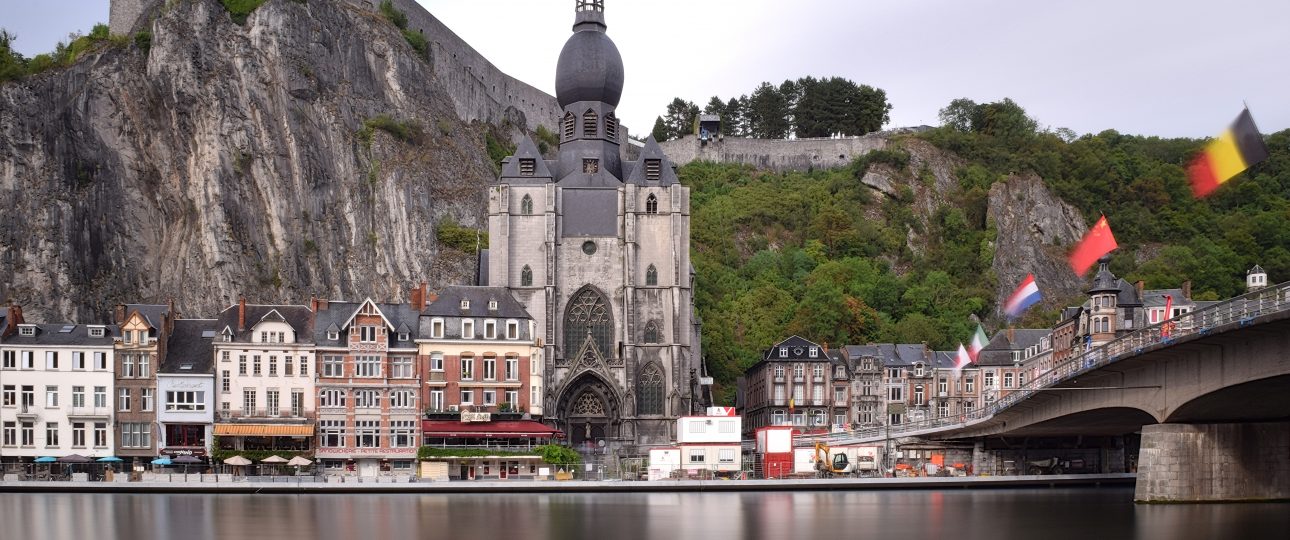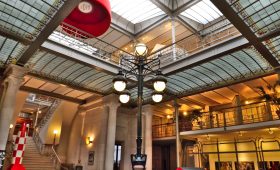Introduction
The Collegiate Church of Our Lady of Dinant is a remarkable Gothic structure located in the picturesque city of Dinant, Wallonia, Belgium. Situated along the banks of the Meuse River, this church is a testament to the region’s architectural evolution and historical depth. In this article, we will delve into the church’s unique features, its historical journey, and practical tips for visitors planning a trip to this iconic site.
Historical Significance
The Collegiate Church of Our Lady of Dinant has its origins in a 10th-century Romanesque church that unfortunately collapsed in 1228. The current Gothic structure, built in the 13th century, stands as a replacement, preserving only the north door from its predecessor. This church has witnessed centuries of history, serving as a spiritual center and a symbol of resilience in the face of adversity.
The Architectural Marvel
The church is a stunning example of Gothic architecture, with several features that capture the attention of visitors:
- Stained Glass Windows: These windows are not only beautiful but also narrate biblical stories, showcasing the craftsmanship of the era.
- Pear-Shaped Bell Tower: The separate 16th-century bell tower is a distinctive feature, with its unique pear shape making it a recognizable landmark.
- Interior Design: The church’s interior offers a serene atmosphere, with high ceilings and detailed altars that invite reflection and admiration.
What Makes the Collegiate Church of Our Lady Unique?
The church stands out for its architectural and historical significance:
- Blend of Styles: The transition from Romanesque to Gothic architecture is evident, providing a visual narrative of architectural evolution.
- Historical Artifacts: The church houses relics and artifacts that reflect Dinant’s rich history and cultural importance.
- Spiritual Atmosphere: The peaceful ambiance offers a retreat from the bustling city, making it a place for contemplation.
Visiting the Collegiate Church of Our Lady
Best Time to Visit
Consider visiting during spring (April to June) or fall (September to October) when the weather is mild and the crowds are fewer, allowing for a more relaxed experience.
How to Get There
Reaching the Collegiate Church of Our Lady is straightforward:
- By Train: Dinant is accessible by train from major Belgian cities. The church is a short walk from the Dinant train station.
- By Bus: Local buses service the area, providing easy access to the city center.
- By Car: Parking facilities are available nearby, though availability may vary during peak tourist seasons.
Local Transportation
Once in Dinant, you can explore the city using various transportation options:
- Walking: Dinant’s compact size makes it ideal for exploring on foot.
- Bicycles: Rent a bike to enjoy the scenic routes along the Meuse River.
- Buses: Local buses can take you to different attractions around the city.
Exploring the Surrounding Area
Dinant offers more than just the Collegiate Church. Consider visiting these nearby attractions:
- Citadel of Dinant: This historic fortress provides panoramic views of the city and the river.
- Saxophone Museum: Celebrate the legacy of Adolphe Sax, the inventor of the saxophone, in his hometown.
- Grotte La Merveilleuse: Explore the stunning limestone caves located just outside the city.
Tips for Visiting
To enhance your visit to the Collegiate Church of Our Lady, consider these tips:
- Dress Appropriately: As a place of worship, modest attire is recommended.
- Guided Tours: Join a guided tour to gain deeper insights into the church’s history and architecture.
- Photography: Be aware of any photography restrictions, especially during services.
Conclusion
The Collegiate Church of Our Lady of Dinant is a captivating destination that offers a glimpse into Belgium’s rich architectural and cultural heritage. Its unique features and serene atmosphere make it a worthwhile stop for those exploring the region. With its strategic location and proximity to other attractions, it provides a comprehensive experience for visitors to Dinant.
Summary of Facts
- Located in Dinant, Wallonia, Belgium.
- Rebuilt in the 13th century after the collapse of the original 10th-century Romanesque church.
- Features include stained glass windows and a 16th-century pear-shaped bell tower.
- Best visited in spring or fall for mild weather and fewer crowds.
- Accessible by train, bus, or car with parking available nearby.
- Nearby attractions include the Citadel of Dinant, Saxophone Museum, and Grotte La Merveilleuse.
- Visitors should dress modestly and consider guided tours for a richer experience.




